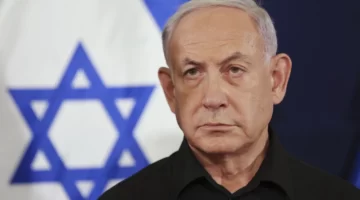Residents fight back against gun violence
 WEST PALM BEACH, Fla. (AP) — Javen Bennett was in middle school the first time he saw a shootout. Back then, the sound of gunfire would bring him to tears. He would panic: Was someone he knew hurt?
WEST PALM BEACH, Fla. (AP) — Javen Bennett was in middle school the first time he saw a shootout. Back then, the sound of gunfire would bring him to tears. He would panic: Was someone he knew hurt?
Now going into his junior year of high school at Palm Beach Lakes, Bennett barely flinches when bullets blaze through the north end of West Palm Beach.
“It’s just normal to us,” said the 16-year-old, who lives near Coleman Park. “Somebody that’s not from the ’hood or been around it, they’ll hear a firecracker, they’ll get scared thinking it’s a gunshot.
“We wouldn’t move.”
Much of the city’s gun violence is concentrated in neighborhoods near Bennett’s — historically Black, lower-income communities that for years have felt the scourge of shootings and the frustration of cold cases. So too are a significant portion of the nearly 200 fatal shootings in the city since 2009.
Yet, beyond the whiz of bullets, holler of sirens and screams of realization — “That’s my baby!” — are the cries of residents saying “Enough!” by tackling the root causes of their area’s crime — poverty, drugs and hopelessness — in pursuit of a more peaceful reality.
Ricky Aiken calls them Hope Dealers.
He mentors 30 of them through the nonprofit he co-founded, Inner City Innovators, after the violent summer of 2015. The organization, which runs primarily on private donations and grants from out-of-state groups such as Everytown for Gun Safety, aims to curb gun violence by offering young men in the community a different kind of clique, one free of gangs, drugs and violence.
Bennett is one of them. He’s ready for a change.
TRAUMATIC NORMS
Last summer, 100 or so West Palm Beach teenagers from in and around Bennett’s neighborhood lined up across a gymnasium floor. Presenters at the city-run Teens Unite program that day instructed the teens to step forward if they, their friends or family had experienced gun violence.
Everyone moved up.
That’s the story Kevin Jones shares when talking about gun violence in West Palm Beach. Jones, the city’s coordinator of community initiatives, said most of the teens were numbed to the trauma such violence spurns until they had to sit in a circle and talk about it.
“What we want them to understand is their normal is not normal,” Jones said. He stresses to them that elsewhere, teenagers don’t carry guns for protection and that insults aren’t met with gunfire.
The city hired Jones in 2014 as part of then-Mayor Jeri Muoio’s Village Initiative, an effort toward lowering violence among young Black men in the city’s north end.
The statistics are startling.
In 2 of every 3 homicides in the city between 2009 and 2019 the victims were Black males, despite representing only 1 of every 6 West Palm Beach residents. That’s 143 Black males killed in the city during that time, all but seven of whom were shot to death. Their average age was 28.
INTERVENTION
West Palm Beach Police Chief Frank Adderley stressed that it’s a small group of people to blame for the majority of the city’s killings.
That’s true in cities across the country, said Meaghan McDonald, director of field innovations at the National Network for Safe Communities through John Jay College of Criminal Justice in New York City.
McDonald works under David Kennedy, the co-founder and executive director of the network. In the 1990s, Kennedy, a criminologist, developed “Operation Ceasefire,” a plan to curb gang-related gun violence in Boston through what Kennedy calls group-violence intervention.
The idea is to identify key players behind the majority of a city’s violent crime and put them in a room with community leaders, law-enforcement officers and social workers. That’s often done by inviting people on probation or parole so they’re required to attend.
First, community leaders, along with “influentials,” or families and friends with influence over those responsible for the violence, share their moral opposition to it and their desire for safer neighborhoods.
Then police explain how their enforcement will be changing. They’ll use whatever information they have to pinpoint which group is behind the latest shooting and immediately crack down on everyone involved in it. That means using individuals’ “legal vulnerabilities” — outstanding arrest warrants, unpaid child support, probation or parole requirements — to put pressure on those responsible for the violence, McDonald said.
It’s a way for there to be consequences for violent crimes, even when authorities can’t get witnesses to come forward and testify about the more serious offense.
Finally, social workers show them a way out. Part of the program depends on allocating resources specifically to those identified as key players in the violence and offering a 24/7 hotline for them to call whenever they’re ready to reach out for help.
Much of the social services work focuses on the “big small stuff,” McDonald said, or immediate needs that can be critical obstacles for bigger goals. She pointed to examples such as not having a ride to a job interview and thus remaining unemployed, or not having a valid ID and consequently not being able to obtain government help, such as food stamps, and subsequently going hungry.
In Boston, the program led to a 63 percent decrease in violent crimes among the city’s youth and a 30 percent drop in homicides citywide, Kennedy’s research found. Cities across the globe have had similar results.
“To really make an impact on violence, we have to do things differently and more radically,” McDonald said.
A COMMUNITY EFFORT
Although dozens of other violence prevention programs exist, key among almost all of them is the wider community’s commitment to change.
In Oakland, that first played out in a 2004 vote on what was known as “Measure Y.” It raised the parcel tax on middle- and upper-income families and allocated the additional tax revenue, along with money from parking fees in commercial lots, to go directly toward curbing the city’s gun violence, explained Mike McLively, director of the Community Violence Initiative at the California-based Giffords Law Center to Prevent Gun Violence.
The 10-year commitment of $20 million per year was split so 60 percent of the money went to the police department for additional officers and engagement efforts, and the other 40 went toward community-based violence-prevention initiatives, such as mental-health counseling, educational support and job placements, through the city-run agency, Oakland Unite.
The investment worked, McLively said.
Since 2012, Oakland has cut its homicide rate in half, according to studies by the Giffords Center, and in 2014 Oakland voters approved a similar measure to continue the efforts.
The effectiveness of Oakland’s long-term financial investment in both police and social services makes McLively all the more frustrated when he hears politicians say there isn’t more money to put toward social services in communities affected by gun violence.
Look what happened after Parkland, he said.
Within three weeks of 17 students and staff members being shot to death at Marjory Stoneman Douglas High School, Florida legislators passed a $400 million school-safety bill with tens of millions going toward school security, school-resource officers and mental-health resources.
The bill also tightened gun laws by allowing law enforcement to file risk-protection orders that allow them to take guns and ammunition temporarily from people deemed to be a risk to themselves or others. The act additionally bans “bump stocks,” hikes the minimum age to buy a gun from 18 to 21 and imposes a three-day waiting period on any gun purchase.
“We find (the money) when privileged communities are impacted, but we don’t when we have day-to-day violence,” McLively said.
NEW NORMS
Ricky Aiken sees the privilege surrounding his neighborhood. In fact, it can make the day-to-day violence of the city’s north end seem even more bleak, he said.
“We live in a city filled with wealth and our community is just in such a desperate situation,” Aiken said. “I think that kind of draws people into feeling that they don’t have the options or the opportunity that we all know is there.”
That’s why Aiken brings in professionals to show his young men both what is out there and how to make it their reality.
A tangible path toward something better, he said, can be key in reducing the area’s gun violence.
“We need to see people as people who need help, who need services,” Aiken said. “People think it’s the Hope Dealers versus the dope dealers, it’s good versus evil.
“Even the worst elements of our communities are profound casualties of our racial legacies in this country.”
Central to the city’s Village Initiative, which Aiken has helped advise, is compassion, said Kevin Jones.
For example, the summer Teens Unite program brings together teenagers from across the city. “These young people, they’re interacting with folks that historically they shoot at,” Jones said.
There, they learn to see each other as people, not rivals.
Similarly, the city’s efforts through the initiative toward reducing violence among young men in the north end focuses not on punishment but on deterrence by promoting better education, job prospects and physical and mental health treatment, Jones said.
Last year, Jones was among the clergy and community members in West Palm Beach and Riviera Beach who teamed with police specifically to address retaliatory violence in the cities. The idea stemmed from the national program R.E.C.A.P., or Rebuilding Every Community Around Peace, in which faith and community leaders flood neighborhoods following violent crimes to provide emotional support and serve as mediators between police and residents, as they did after shootings in October in two north end neighborhoods.
The ultimate goal is to build trust between residents and police, Jones said. The department similarly runs outreach programs such as Cops & Scholars, in which officers go out to eat with middle school students who’ve shown improvement in school, and Shop with a Cop, when officers shop for holiday gifts with children from low-income families.
Chief Adderley welcomes ideas on how to quell the shootings. Since taking over the city’s police department in 2019, he’s emphasized combating open-air drug sales and violent crime and more recently rolled out the GHOST unit — Gang-Habitual Offender Suppression Team.
Adderley credits that unit with helping the city see a 67 percent decrease in homicides in the first half of 2020 — three — as compared to the first half of last year. (Of note, four people were killed in the city, three fatally shot, from July through the first two weeks of August.)
Wherever the path toward a more peaceful north end weaves, Javen Bennett wants to lead his neighbors through it.
“We won’t be afraid of where we’re from and where we live at,” Bennett said. “It’s our home.”



No Comment